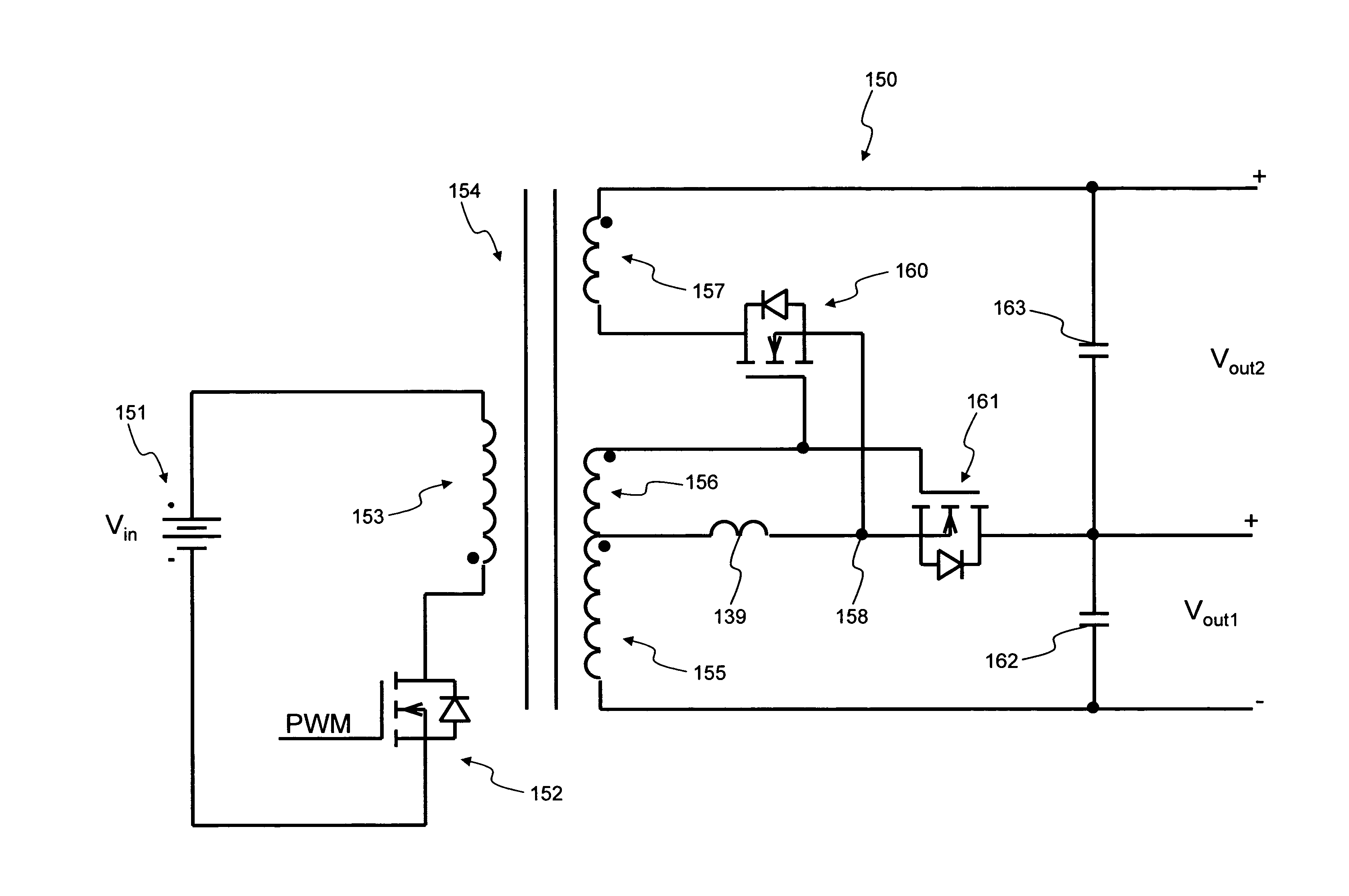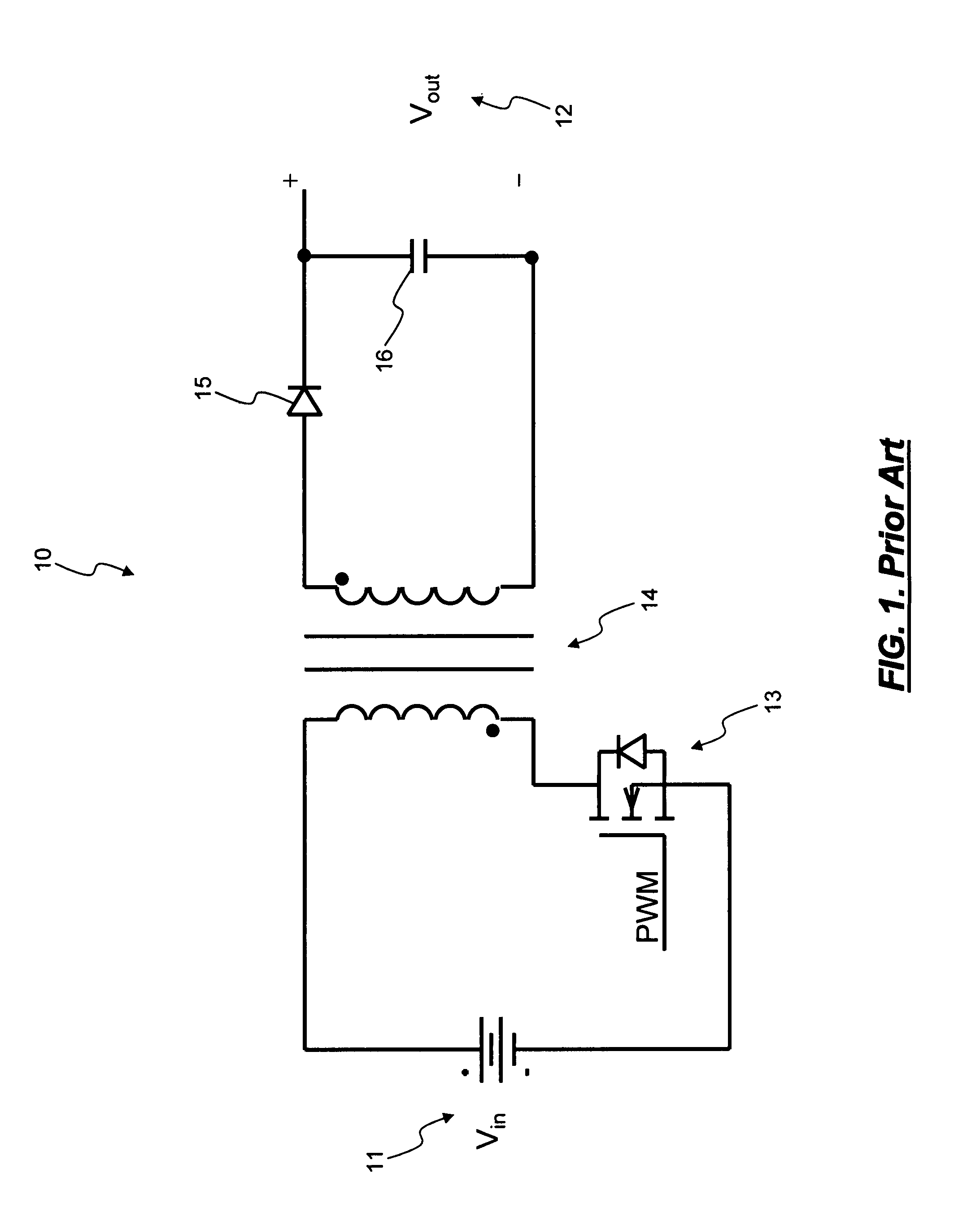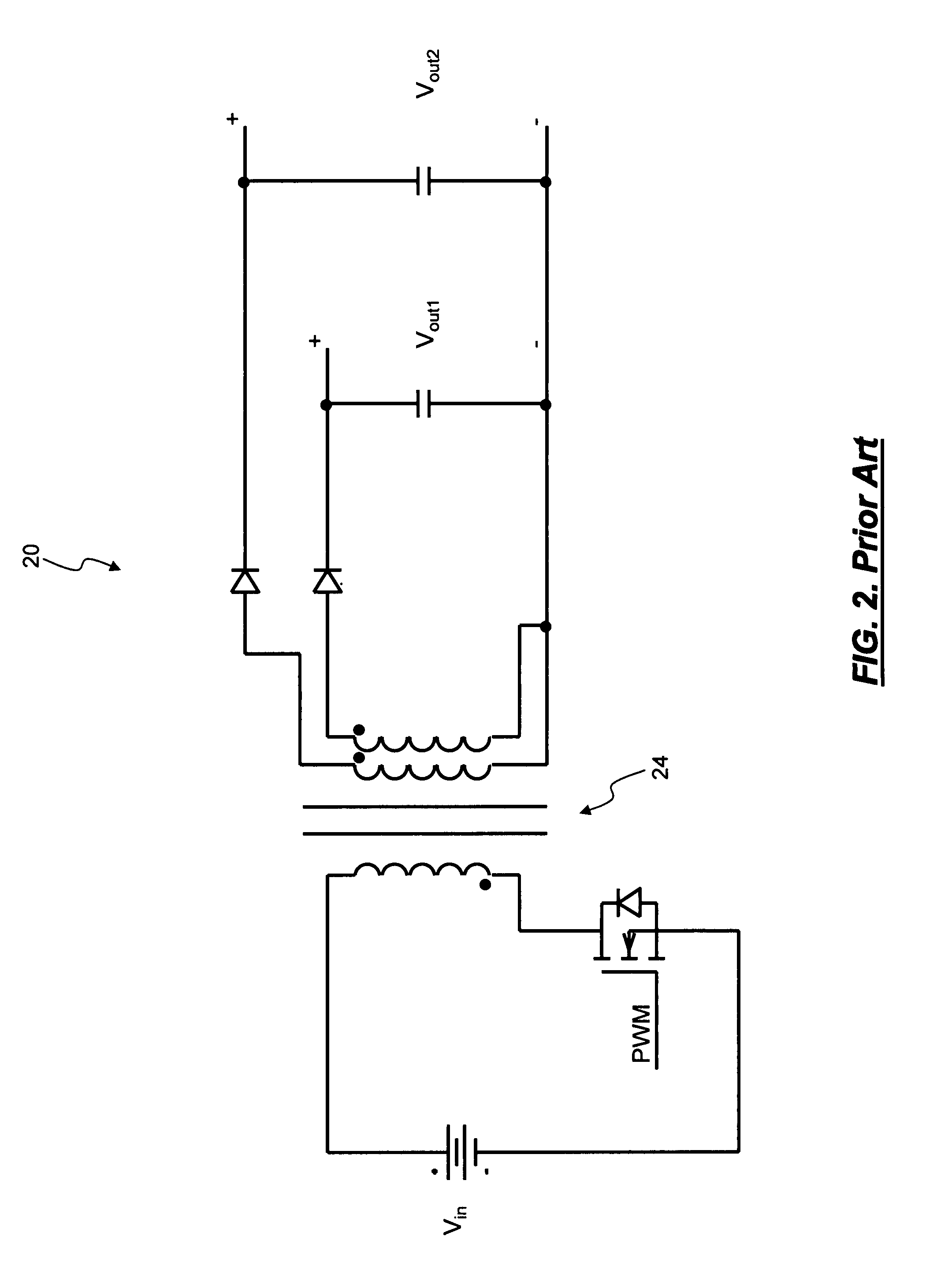Flyback converter providing simplified control of rectifier MOSFETS when utilizing both stacked secondary windings and synchronous rectification
a flyback converter and secondary winding technology, applied in the direction of electric variable regulation, process and machine control, instruments, etc., can solve the problems of insufficient understanding of the exact operation of self-driven synchronous rectifiers, inability to utilize stacked winding configuration for generating more than one voltage output, and inability to achieve self-driven synchronous rectifiers. precise operation, the effect of simplifying the control circuit and reducing the complexity of multiple control voltages
- Summary
- Abstract
- Description
- Claims
- Application Information
AI Technical Summary
Benefits of technology
Problems solved by technology
Method used
Image
Examples
Embodiment Construction
[0029]In various exemplary embodiments, the present invention eliminates the complexity of multiple control voltages by arranging synchronous rectifier MOSFETs in such a manner that they operate with a common source potential while still providing for the use of a stacked output winding in a flyback converter topology. With a common source potential, a single rectifier control voltage can be used to operate the rectifiers for multiple outputs greatly simplifying the control circuit. The MOSFETs are arranged to provide a simple form of synchronous rectification. Advantageously, the present invention maintains the inherent simplicity of the flyback design while enabling designs with well-regulated multiple voltage outputs and the efficiency benefits of synchronous rectification.
[0030]The invention simplifies the gate drive requirements when using both a stacked output winding configuration and synchronous rectification in a flyback converter. In particular, when relying on a self driv...
PUM
 Login to View More
Login to View More Abstract
Description
Claims
Application Information
 Login to View More
Login to View More - R&D
- Intellectual Property
- Life Sciences
- Materials
- Tech Scout
- Unparalleled Data Quality
- Higher Quality Content
- 60% Fewer Hallucinations
Browse by: Latest US Patents, China's latest patents, Technical Efficacy Thesaurus, Application Domain, Technology Topic, Popular Technical Reports.
© 2025 PatSnap. All rights reserved.Legal|Privacy policy|Modern Slavery Act Transparency Statement|Sitemap|About US| Contact US: help@patsnap.com



